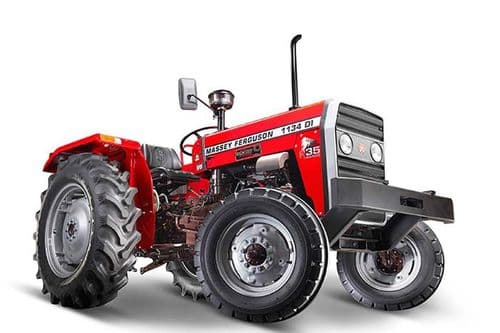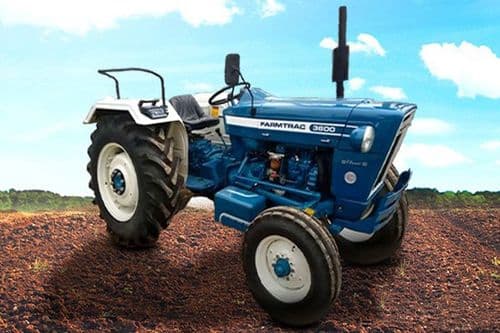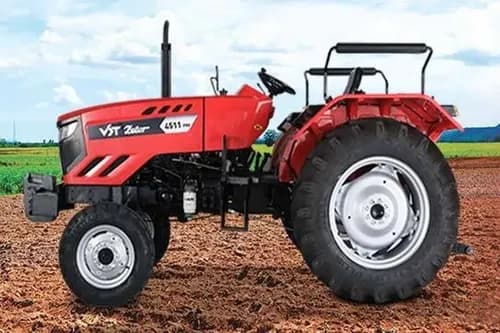Ad
Ad
Irrigation System: Methods, Types, and Significance
Irrigation is the process of artificially providing water to crops in order to meet their water requirements. Solar Power Irrigation Systems, Sprinkler Irrigation Systems, Drip Irrigation Systems, Centre Pivot Irrigation, Sub Irrigation Systems, and Manual Irrigation Systems are a few types of irrigation. In this article, we have discussed the irrigation methods, types, and their significance.

Irrigation is a practice in agriculture that involves supplying water to crops to ensure their proper growth and development. There are various methods and types of irrigation systems that have evolved to meet the diverse needs of agricultural regions around the country. In this article, we will explore the methods, types, and significance of irrigation systems.
What is an irrigation system?
Irrigation is the process of artificially providing water to crops in order to meet their water requirements. Irrigation can also be used to deliver nutrients to crops. The primary objective of an irrigation system is to provide controlled and efficient water distribution to plants while conserving water resources.
The frequency, rate, amount, and time of irrigation depend on the crops, soil type and season. Summer crops require more water than winter ones.
Also Read: Top Tips for Choosing the Right Tractor for Your Farm
Types of Irrigation
There are various types of irrigation systems used in Agriculture. These irrigation systems are used according to the types of soils, climates, crops, and resources. Farmers commonly use the following forms of irrigation:
Solar Power Irrigation System
Solar power irrigation systems use sunlight to generate electricity, making them energy-efficient and environmentally friendly. They reduce the reliance on fossil fuels and conventional electricity sources, minimizing greenhouse gas emissions.
Solar irrigation systems offer significant cost savings in the long run. Once installed, they require minimal operational expenses as sunlight is free. This can reduce the financial burden on farmers and promote sustainability. There are three main types of Solar Power Irrigation Systems, which are explained below.
- Surface Irrigation system
In this system, no pumping system is required. Water is allowed to flow across the field under the force of gravity. It is a common method where fields have a gentle slope. Surface irrigation methods include furrow irrigation, basin irrigation, border irrigation, and flood irrigation.
Localized Irrigation system
In this system, Water is delivered to each plant via a network of low-pressure pipes.
Sprinkler Irrigation system
In this system, Overhead high-pressure sprinklers or sprinklers from the moving platform distribute water from a central position.
Drip Irrigation system
In this system, drops of water are provided near the roots of the plants. This method of an irrigation system requires more care, thus it is rarely employed. Drip irrigation is more efficient than other irrigation technologies when properly designed, installed, operated, and managed.
Centre Pivot Irrigation
In this system, a sprinkler system moves in a circular manner to distribute the water.
Sub Irrigation system
In this system, Water is dispersed by raising the water pressure through a network of pumping stations, gates, ditches, and canals.
Manual Irrigation system
In this system, Manual labour is used to distribute water using watering cans. This is a labour-intensive and time-consuming irrigation system.
SMART irrigation system
Smart irrigation is a method of conserving water in irrigation by utilizing science and technology. It includes weather sensors, soil sensors, and a variety of controls. The sensor detects current weather conditions and actual ground humidity, and the controller controls the water valve's opening and closing.
This type of irrigation system is appropriate for water-saving management in lawns, farms, landscapes, and other locations. The SMART irrigation system improves performance and is a new technology for automating irrigation systems and conserving water.
This approach controls irrigation based on actual soil and weather conditions, allowing farmers to satisfy demand with a newly adopted strategy that conserves irrigation water.
Each type of irrigation has its advantages and disadvantages, and the choice of method depends on factors such as crop type, climate, available resources, and water availability. The proper selection and management of an irrigation system are essential for maximizing crop yields while minimizing water usage and environmental impacts.
Methods of Irrigation
There are two types of irrigation methods:
- Traditional Techniques
- Modern Techniques
Traditional Methods of Irrigation
In this method, Irrigation is done manually. A farmer pulls water from wells or canals by hand or with animals and transports it to farming areas. This procedure may be slightly different depending on where you live. The key advantage of this method is its low cost. However, its effectiveness is low due to the unequal distribution of water.
Traditional systems include the pulley system, the lever system, and the chain pump. The pump system is the most common and commonly used of them.
The Traditional Methods of Irrigation include Bamboo drip irrigation systems. The bamboo drip irrigation system is a 200-year-old technology that uses bamboo pipes to tap streams and spring water.
This type of irrigation system is common in Meghalaya. Around 18-20 litres of water enter the bamboo pipe system, travel hundreds of meters, and eventually deliver 20-80 drops per minute at the plant location.
Modern Methods of Irrigation
The modern method compensates for the shortcomings of traditional methods and aids in proper water consumption.
The modern method involves two systems:
- Sprinkler system
- Drip system
Sprinkler Irrigation System
A sprinkler system sprinkles water over the crop to ensure even distribution. This approach is highly recommended in locations where water is scarce.
A pump is attached to pipes that generate pressure, and water is sprayed through pipe nozzles. This method is suitable for a wide range of crops and is often used in areas with limited water resources.
Drip Irrigation System
The drip system delivers water drop by drop to the roots via a pipe. Drip irrigation is a precise method of providing water to the roots of plants. It uses a system of tubing, pipes, and emitters to release small, controlled amounts of water directly to the base of each plant.
Drip irrigation is highly efficient and conserves water, making it an ideal choice for water-scarce regions or when water conservation is a priority. Drip irrigation systems include a pump or pressurized water source, water filters, a controller, a pressure control valve, distribution lines, meters, and gouges, hand-operated or electronic control block valves, tubes, fittings, and accessories, emitting devices, chemical injectors.
Drip irrigation, by providing more targeted and efficient irrigation, lowers water losses due to evaporation or runoff. This leads to increased water conservation as well as improved plant health and growth overall.
Importance of Irrigation System
The significance of the irrigation System is explained below:
- Agriculture suffers from insufficient and unpredictable rainfall. Irrigation boosts output even in areas with minimal rainfall.
- Multiple cropping is not viable in India since the rainy season varies by area. However, the climate allows for cultivation all year. In most parts of the country, irrigation infrastructure allows for the cultivation of more than one crop.
- The productivity of irrigated land is higher than that of unirrigated land.
- Irrigation has aided in the cultivation of the majority of the fallow land, stabilized output and yield levels and enhanced the availability of water supplies, which benefits everyone.
- Irrigation enhances the availability of water supply, which boosts farmer income.
Also Read: Fish Farming Business in India: How to Start, its Types, and Challenges
Irrigation systems offer numerous benefits, including increased crop yields, improved plant health, reduced dependence on natural precipitation, and the ability to control the timing and frequency of watering. However, they also come with challenges, such as the need for proper maintenance, energy usage (in the case of electric pumps), and the potential for over-irrigation leading to soil degradation and water wastage.
Irrigation should be optimized because over-irrigation can harm crops. Excess water causes waterlogging, inhibits germination, increases salt concentration, and causes uprooting since roots cannot survive standing water. Thus, for optimal cultivation, the right procedure must be utilized.
To know more about irrigation, its types, methods and importance, keep visiting cmv360.
Features & Articles
Comprehensive Guide to Tractor Transmission System: Types, Functions, and Future Innovations
Learn about tractor transmission types, components, functions, and selection factors to enhance efficiency, performance, and agricultural productivity....
12-Mar-25 09:14 AM
Read Full NewsModern Tractors and Precision Farming: Transforming Agriculture for Sustainability
Precision farming enhances agriculture by integrating GPS, AI, and modern tractors for sustainable, efficient, and productive farming practices in India....
05-Feb-25 11:57 AM
Read Full NewsTop 10 Tractors Under 30 HP in India 2025: Guide
Top 10 tractors under 30 HP in India offer efficiency, affordability, and power, ideal for small farms with diverse agricultural needs....
03-Feb-25 01:17 PM
Read Full NewsNew Holland 3630 TX Super Plus vs Farmtrac 60 PowerMaxx: Detailed Comparison
Compare New Holland 3630 and Farmtrac 60 tractors by specs, price, and features to find the perfect fit for your farm....
15-Jan-25 12:23 PM
Read Full NewsSwaraj 735 FE Vs Eicher 380 2WD Prima G3: Detailed Comparison
The Swaraj 735 FE and Eicher 380 2WD Prima G3 are reliable, powerful tractors suited for various farming tasks....
14-Jan-25 09:41 AM
Read Full NewsHow to Choose the Perfect Tractor for Your Farm: A Comprehensive Guide
Choose the right tractor by assessing farm needs, horsepower, efficiency, comfort, and budget to enhance productivity and savings....
09-Jan-25 09:43 AM
Read Full NewsAd
Ad
As featured on:


Registered Office Address
Delente Technologies Pvt. Ltd.
M3M Cosmopolitan, 12th Cosmopolitan,
Golf Course Ext Rd, Sector 66, Gurugram, Haryana
pincode - 122002

























